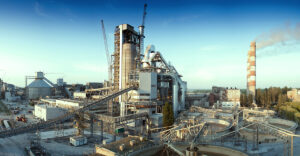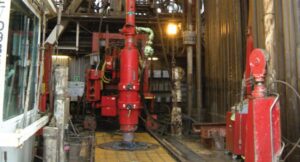OrientMCT
Cementing Technology

Cementing Technology is a crucial aspect of well construction in the oil and gas industry. It involves the process of placing cement slurries into the wellbore to provide zonal isolation, support the casing, and ensure the integrity of the well.
Here are the key elements of Cementing Technology:
Cement Slurry Design: Cement slurries are designed based on well conditions, including temperature, pressure, wellbore geometry, and formation properties. Additives are used to modify the cement properties, such as thickening time, fluid loss control, strength development, and gas migration prevention.
Cementing Equipment: Various cementing equipment is used to deliver and place cement slurries into the wellbore. This includes cement pumps, batch mixers, bulk storage tanks, displacement plugs, centralizers, float equipment, and cement heads. The equipment is selected based on well specifications and the desired cementing technique.
Primary Cementing: Primary cementing is the initial cementing operation performed after casing installation. It involves pumping cement slurries through the casing and up the annulus to create a hydraulic seal between the casing and the wellbore. The goal is to achieve proper zonal isolation and prevent fluid migration.
Remedial Cementing: Remedial cementing is performed to correct issues or address challenges encountered during primary cementing or over the well’s lifespan. It includes squeeze cementing to repair cement deficiencies, plug and abandonment operations, and casing repairs or modifications.
Cement Bonding Evaluation: Techniques such as cement bond logs (CBL) and cement evaluation logs (CEL) are used to assess the quality and effectiveness of the cement bond between the casing and the formation. These evaluations help identify cementing failures, evaluate zonal isolation, and determine any remedial actions required.
Cementing Operations Planning and Execution: Cementing operations require careful planning, including job design, cement slurry calculations, job simulations, and logistics. Execution involves following well-established procedures to ensure safe, efficient, and effective cement placement.
Health, Safety, and Environmental Considerations: Cementing operations must adhere to health, safety, and environmental regulations and best practices. This includes proper handling and disposal of cementing materials, managing potential hazards, and implementing safety measures during cementing operations.
Proper cementing is critical for well integrity, as it ensures zonal isolation, prevents fluid migration, and enhances wellbore stability. Inadequate cementing can lead to costly issues such as sustained casing pressures, gas or fluid migration between formations, and decreased well productivity.
Cementing Technology courses and training programs provide participants with the knowledge and skills required to understand cementing principles, design cement slurries, select appropriate equipment, execute cementing operations, and evaluate cement bond quality. These courses typically include a mix of theoretical instruction, hands-on exercises, simulations, and case studies to provide participants with practical knowledge and industry-relevant experience.

Professionals involved in well construction, drilling operations, or well integrity management often undergo specific training in Cementing Technology to ensure the successful and safe execution of cementing operations in the oil and gas industry.
Get In Touch!
Contact us for a quote or in case of any urgent queries please send us an email on: [email protected]
we will get back to you right away!